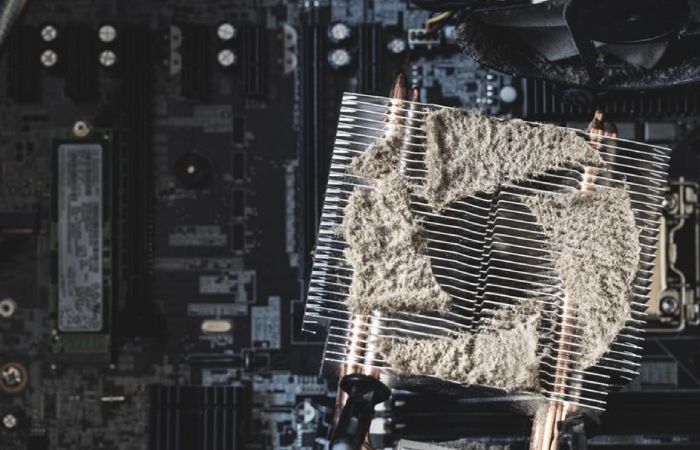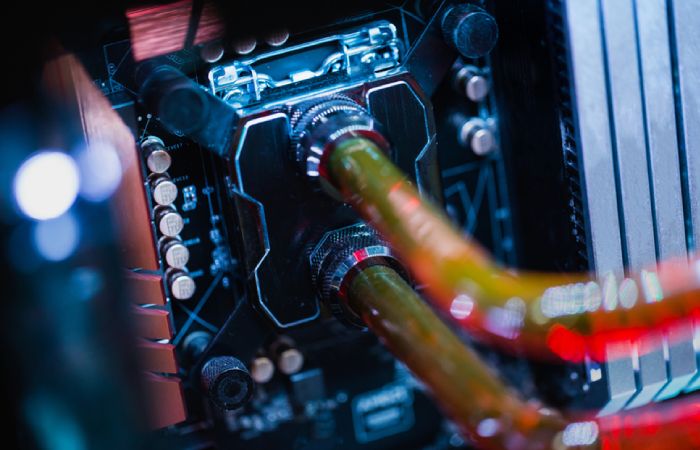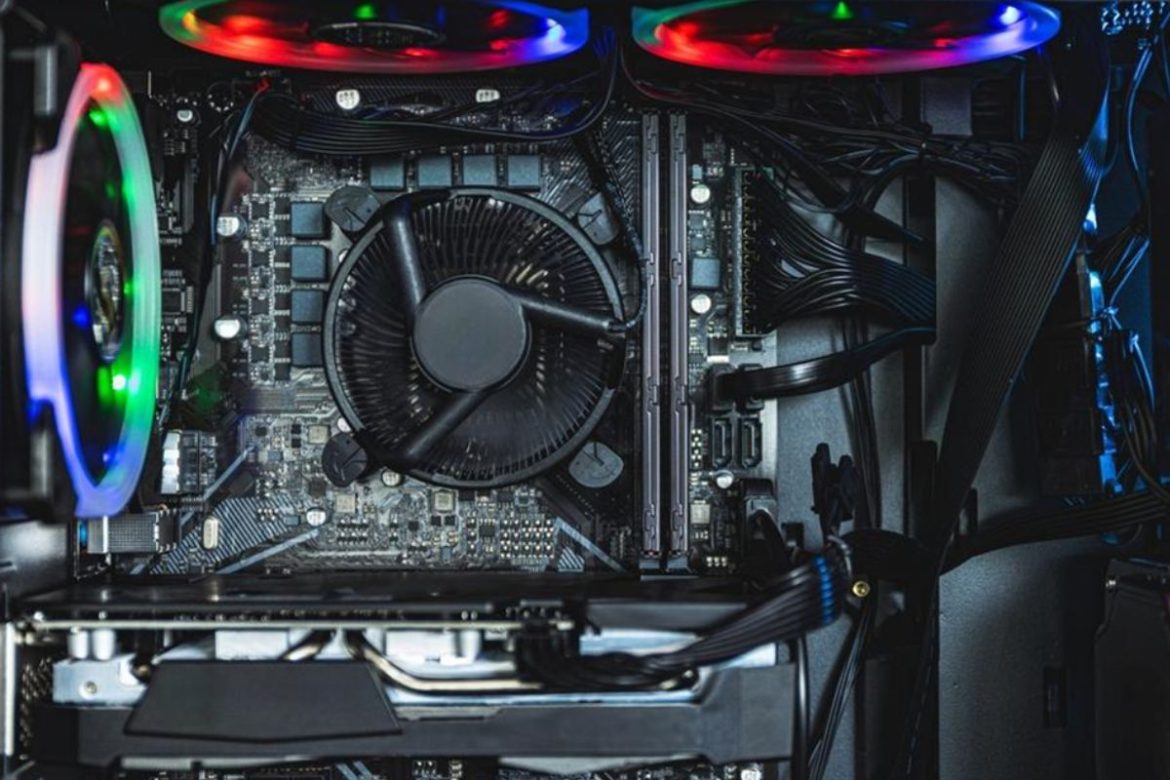Keeping your PC cool is essential, especially during intense gaming or video rendering tasks. Proper cooling ensures smooth performance and prolongs the life of your components. But did you know that the design of your PC case plays a significant role in this? From airflow pathways to material choice, every detail contributes to effective cooling. Let’s explore how various aspects of case design impact PC cooling and offer practical tips for optimizing your setup.
Understanding Airflow Pathways
- The Concept of Airflow: Airflow is all about moving cool air into the case and expelling warm air out. This constant flow helps maintain optimal temperatures for your components.
- Impact of Case Layout: Different case layouts, such as mid-tower, full-tower, and mini-ITX, influence how air moves inside. Mid-tower cases offer a balanced airflow, while full-tower cases provide ample room but may need more fans. Mini-ITX cases, being compact, require precise fan placement to ensure efficient cooling.
- Front-to-Back and Bottom-to-Top Flow: Most PC cases use a front-to-back airflow pattern, where cool air enters from the front and exits from the back. Some designs also use a bottom-to-top flow, taking advantage of heat’s natural tendency to rise. Both methods are effective, but the choice depends on your case layout and components.
Strategic Fan Placement and Configuration
- Importance of Strategic Fan Placement: Placing fans strategically within the case can significantly boost cooling performance. Proper fan placement ensures that cool air reaches all components and warm air is efficiently expelled.
- Roles of Intake and Exhaust Fans: Intake fans, usually placed at the front and bottom, draw cool air into the case. Exhaust fans, positioned at the rear and top, expel warm air. This balanced setup maintains a steady flow of air, preventing hotspots.
- Fan Size and Speed: Fans come in various sizes, typically ranging from 120mm to 140mm. Larger fans can move more air at lower speeds, reducing noise. Fan speed, measured in RPM, also affects cooling. Higher RPM fans move more air but can be noisier.
Case Material and Build Quality
- Thermal Conductivity: The material of your PC case affects its ability to dissipate heat. Aluminum cases have excellent thermal conductivity, making them more effective at cooling than steel or plastic cases.
- Ventilation and Mesh Panels: Ventilation is crucial for airflow. Cases with mesh panels allow more air to flow through, enhancing cooling. Mesh panels also help prevent dust buildup, keeping your components clean.
- Impact of Build Quality: High-quality cases feature tight-fitting panels and robust construction. This reduces air leakage and ensures that airflow follows the intended path, improving cooling efficiency.
Cable Management
- Importance of Tidy Cabling: Cluttered cables can obstruct airflow, leading to higher internal temperatures. Organizing your cables not only looks neat but also helps maintain efficient cooling.
- Built-in Cable Management Features: Modern PC cases have built-in cable management features like routing channels, grommets, and tie-down points. These help keep cables organized and out of the way, promoting better airflow.
- Impact on Airflow: Effective cable management allows unobstructed airflow, ensuring that cool air reaches all components and warm air is efficiently expelled. This leads to better overall cooling performance.

Dust Filtration
- Role of Dust Filters: Dust filters are essential for maintaining long-term cooling efficiency. They prevent dust from entering the case, which can obstruct airflow and cause overheating.
- Types of Dust Filters: Different types of dust filters include mesh and foam. Mesh filters are more effective at blocking dust without restricting airflow, while foam filters offer finer filtration.
- Maintenance Considerations: Regularly cleaning dust filters is crucial for maintaining optimal airflow. Removable and washable filters make this task easier, ensuring continued cooling performance.
Case Size and Compatibility
- Impact of Case Size on Cooling: Larger cases generally offer better cooling potential due to more space for airflow and larger components. They can accommodate more fans and larger cooling solutions.
- Component Compatibility: Case size affects compatibility with components like large CPU cooling heatsinks, GPUs, and radiators for liquid cooling setups. Ensure your case has enough space for your cooling components.
- Clearance and Ventilation Space: Adequate clearance around components and ventilation space within the case are crucial for optimal cooling. This ensures that air can flow freely, maintaining low temperatures.
Liquid Cooling Considerations
- Liquid Cooling vs. Air Cooling: When it comes to liquid cooling vs. air cooling, most will agree that liquid cooling offers superior cooling performance compared to air cooling. However, the case design affects how well it performs. Ensure your case supports liquid cooling components.
- Radiator Placement: Radiator placement is crucial for effective liquid cooling. Cases should have dedicated mounting points for radiators at the front, top, or rear to ensure efficient heat dissipation.
- Tube Routing and Space: Proper tube routing and adequate space for reservoirs and pumps are essential for custom liquid cooling loops. Choose a case that offers ample room for these components.

Additional Features and Innovations
- Modular Design: Modular case designs offer customizable cooling setups. Adjustable fan mounts and removable panels allow you to optimize airflow according to your needs.
- Vertical GPU Mounting: Vertical GPU mounting can impact cooling and airflow within the case. Ensure your case supports this feature and consider its effect on overall cooling performance.
- Noise Dampening: Noise dampening features in case design can reduce system noise but may trade off some airflow. Choose a case that balances noise reduction with cooling efficiency.
Keep Your Components Cool and Your System Running Smoothly
Case design plays a huge role in PC cooling, influencing everything from airflow pathways to the overall thermal efficiency of your system. The choice of materials, strategic fan placement, and thoughtful airflow management are all critical factors directly impacting how well your components stay cool under load. By understanding these elements, you can make informed decisions that enhance your PC’s cooling performance, ultimately extending the lifespan of your hardware and ensuring stable operation.
Whether you’re building a new system from scratch or looking to upgrade an existing one, investing in a case that prioritizes cooling can make a significant difference. Prioritize a design that aligns with your specific cooling requirements — whether for high-performance gaming, intensive workloads, or general use. With the right case, you can maintain optimal temperatures, prevent thermal throttling, and enjoy a smoother, more reliable computing experience. Stay cool, and happy building!

